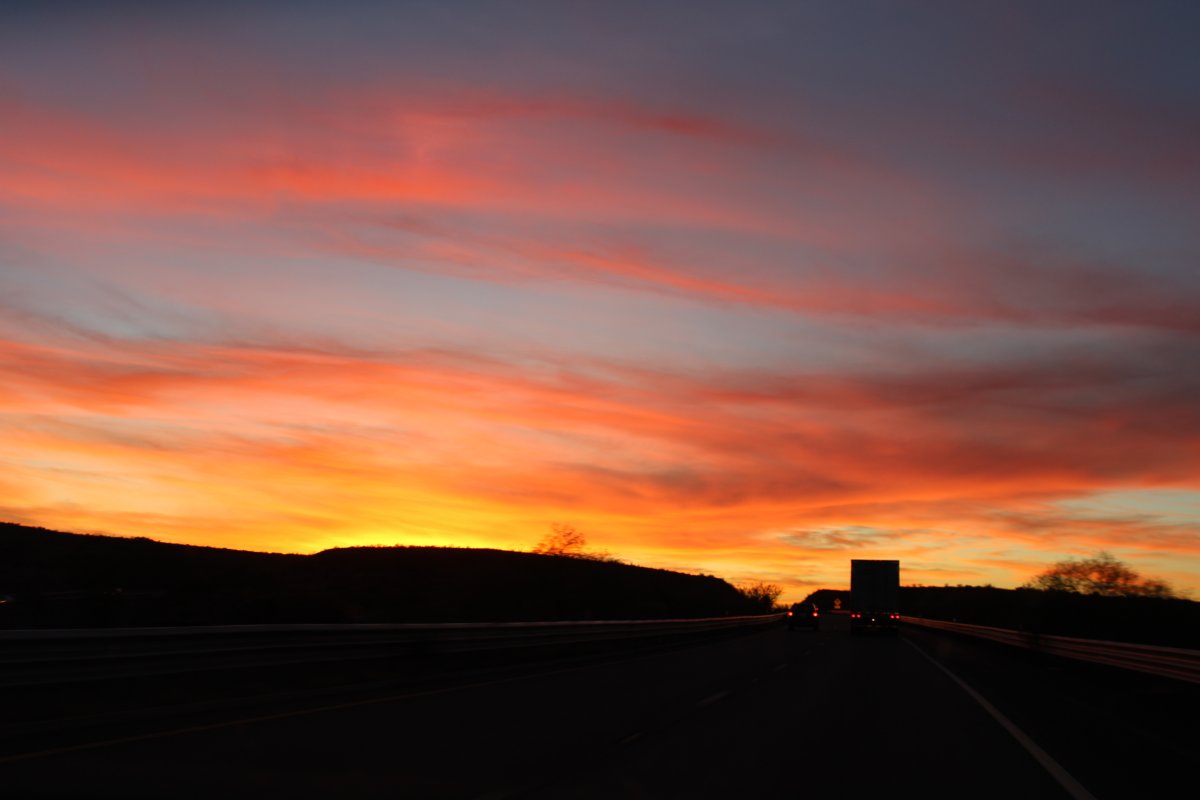November 22, 2020 - Tombstone, Arizona
Today, we drove down to Tombstone, Arizona, famous for the shootout at the OK Corral. I had been to Tombstone once before, way back in June 1984. At that time, I was in a P-3 Squadron in Brunswick, Maine. For some reason one of the squadron planes flew to Davis-Monthan Air Force Base and back a few days later. Tucson was the home town of one of my best friends in the squadron, fellow junior officer Johnny Bray, so we both flew to Tucson and he showed me around. One of the things we did was visit Tombstone. (Sadly, Johnny passed away in 2010 of some terrible disease; a real shame, he died way too young)
Tombstone is mostly one long main street: East Allen Street. Lots of people walk around in period attire.
Tombstone was founded in 1877 by prospector Ed Schieffelin. It became one of the last boomtowns in the American frontier. The town grew significantly into the mid-1880s as the local mines produced $40 to $85 million in silver bullion, the largest productive silver district in Arizona. Its population grew from 100 to around 14,000 in less than seven years. Within two years of its founding, although far distant from any other metropolitan area, Tombstone had a bowling alley, four churches, an ice house, a school, two banks, three newspapers, and an ice cream parlor, alongside 110 saloons, 14 gambling halls, and numerous dance halls and brothels. All of these businesses were situated among and atop many silver mines. The gentlemen and ladies of Tombstone attended operas presented by visiting acting troupes at the Schieffelin Hall opera house, while the miners and cowboys saw shows at the Bird Cage Theatre and brothel. In the mid-1880s, the silver mines penetrated the water table and the mining companies made significant investments in specialized pumps. A fire in 1886 destroyed the Grand Central hoist and the pumping plant, and it was deemed unprofitable to rebuild the costly pumps. The city nearly became a ghost town, saved only because it was the Cochise County seat until 1929. The city's population dwindled to a low of 646 in 1910, but grew to 1,380 by 2010.
One of the famous places in Tombstone is the Bird Cage Theatre. If you've seen -- and if not, you should -- the 1993 movie Tombstone with Kurt Russell, Val Kilmer, and Michael Biehn -- you will remember the scene in the theatre. Well, that was the Bird Cage Theatre. Gambling, drinking, shows, and prostitution. The Bird Cage Theatre closed in 1889 after the silver played out. It is one of the few original buildings that survived the fires. The building was kept closed until it was purchased in 1934, when the new owners found that almost nothing had been disturbed since it had been closed in 1889. It is now a museum with all sorts of interesting artifacts, exactly as they were during the boom years: a grand piano that has been there since 1881, the original Faro table where Doc Holliday played, the stage, the alcoves, the original Boot Hill hearse, a bar with a bullet hole in it, the poker table where the longest poker game ever played took place (8 years, 5 months, and 3 days, 24 hours a day!).
The Birdcage Theatre lets you take pictures -- which of course I did -- but they ask you not to post them. Out of respect for their wishes I won't post any. Incidently, the lady that ran the museum told us the movie was really good for Tombstone; tourism really picked up greatly after that. I recommend the Bird Cage though; well worth the money.





We had lunch inside. Notice the huge bar on the left. The only two things I remember about Tombstone on my visit with Johnny was sitting at this bar drinking a beer, and one of the epitaphs at Boot Hill Cemetery. "Here lies Lester Moore, four slugs from a .44, no Les, no more".
Notice the movie Tombstone is playing on the TV in the corner.

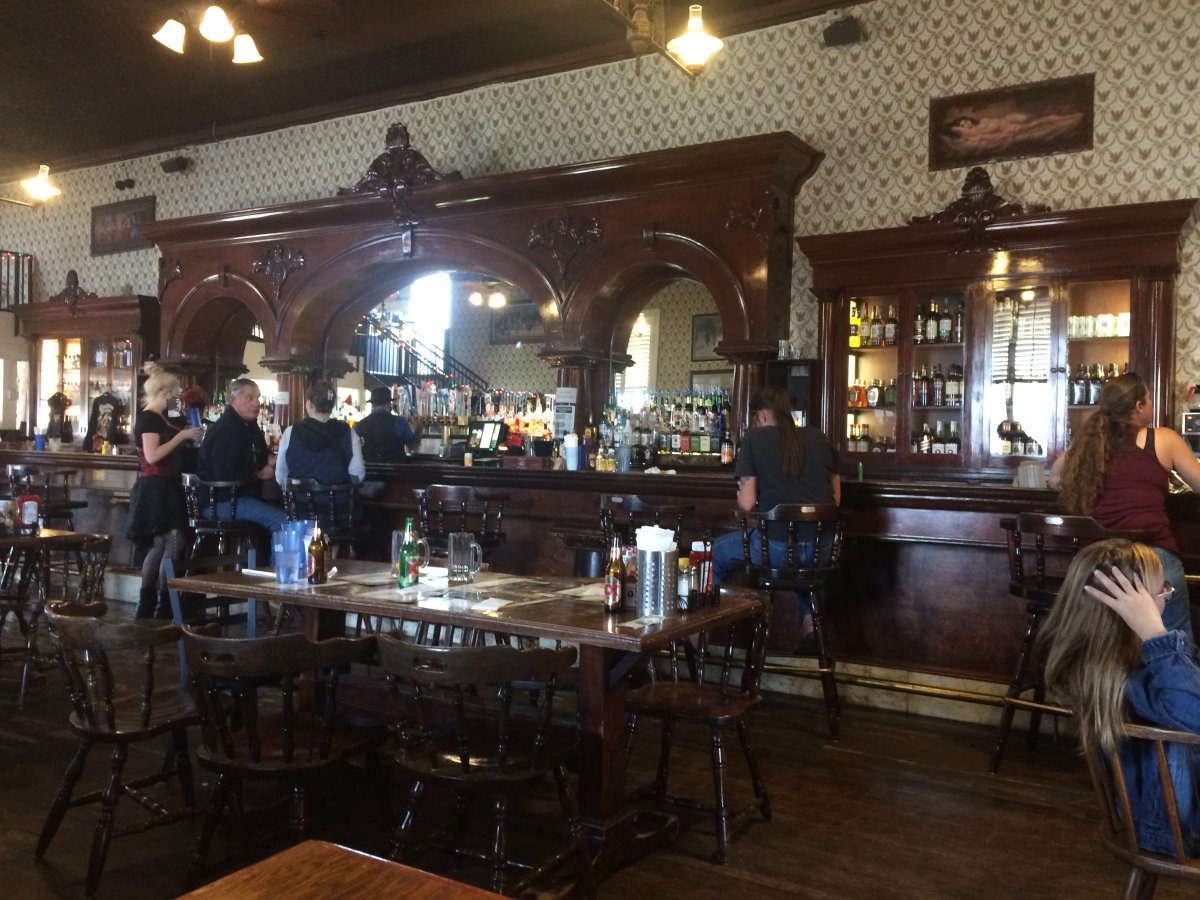
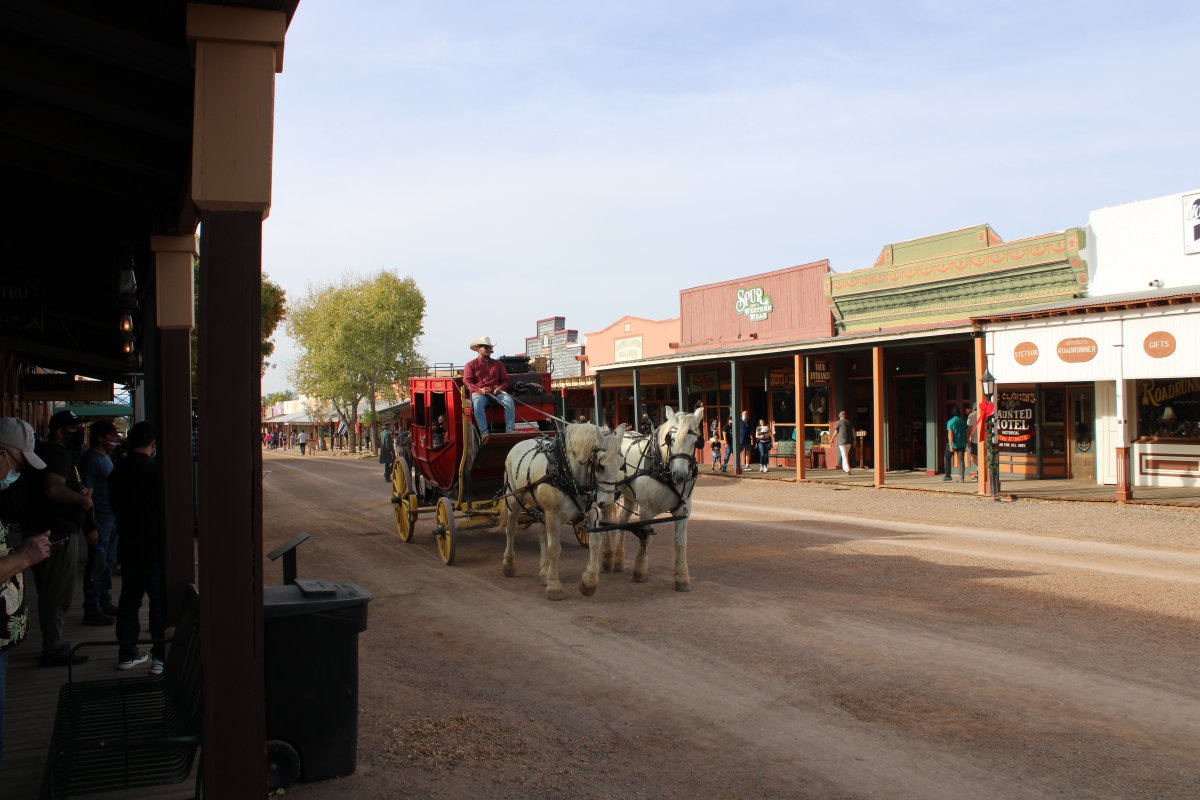
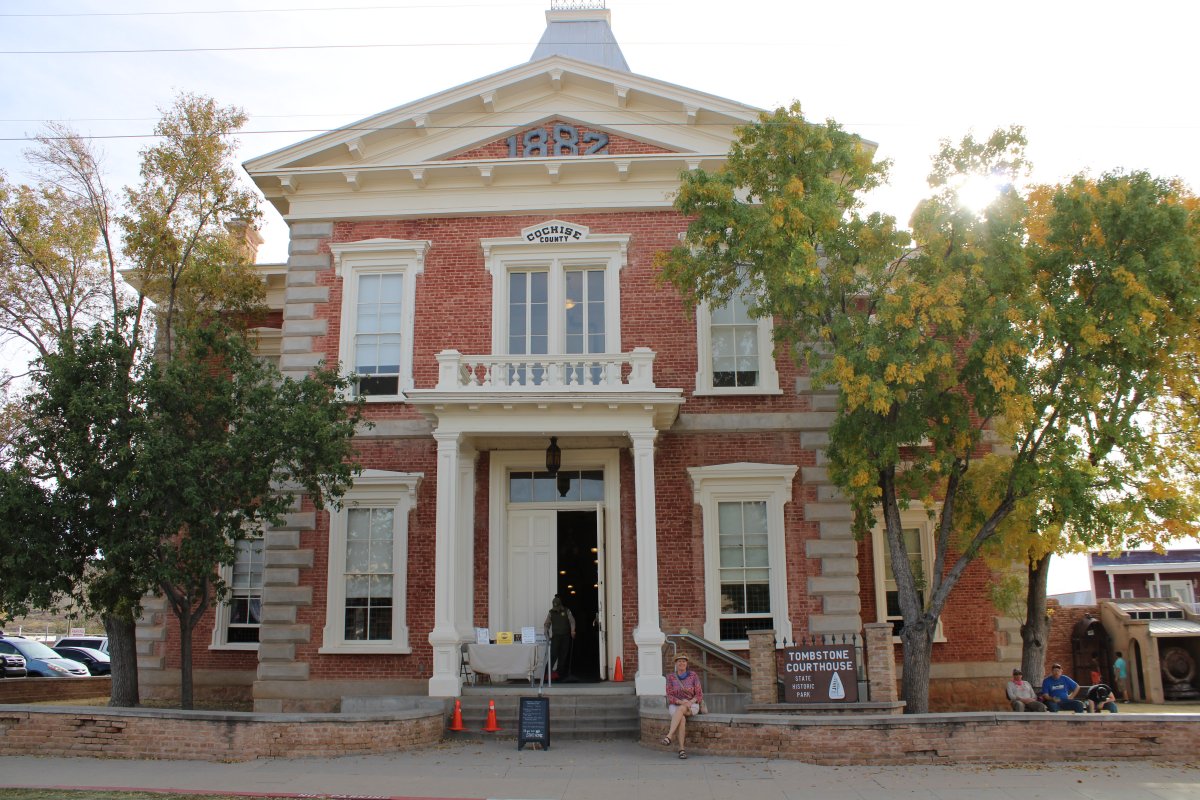
Of course, when you are in Tombstone, you have to see the Gunfight at the OK Corral. It is located at the actual site of the gunfight. Or maybe not. The corral is pretty much the same as it was back then. They show a film-like thing, there are some exhibits to look at, and then there is the gunfight renactment.
The gunfight took place on October 26, 1881, in a vacant lot owned by famous photographer C. S. Fly near, but not in or at, the O.K. Corral, during which the three Earp brothers -- Virgil, Wyatt and Morgan -- and Doc Holliday killed Tom McLaury, Frank McLaury, and Billy Clanton. Virgil and Morgan were wounded.




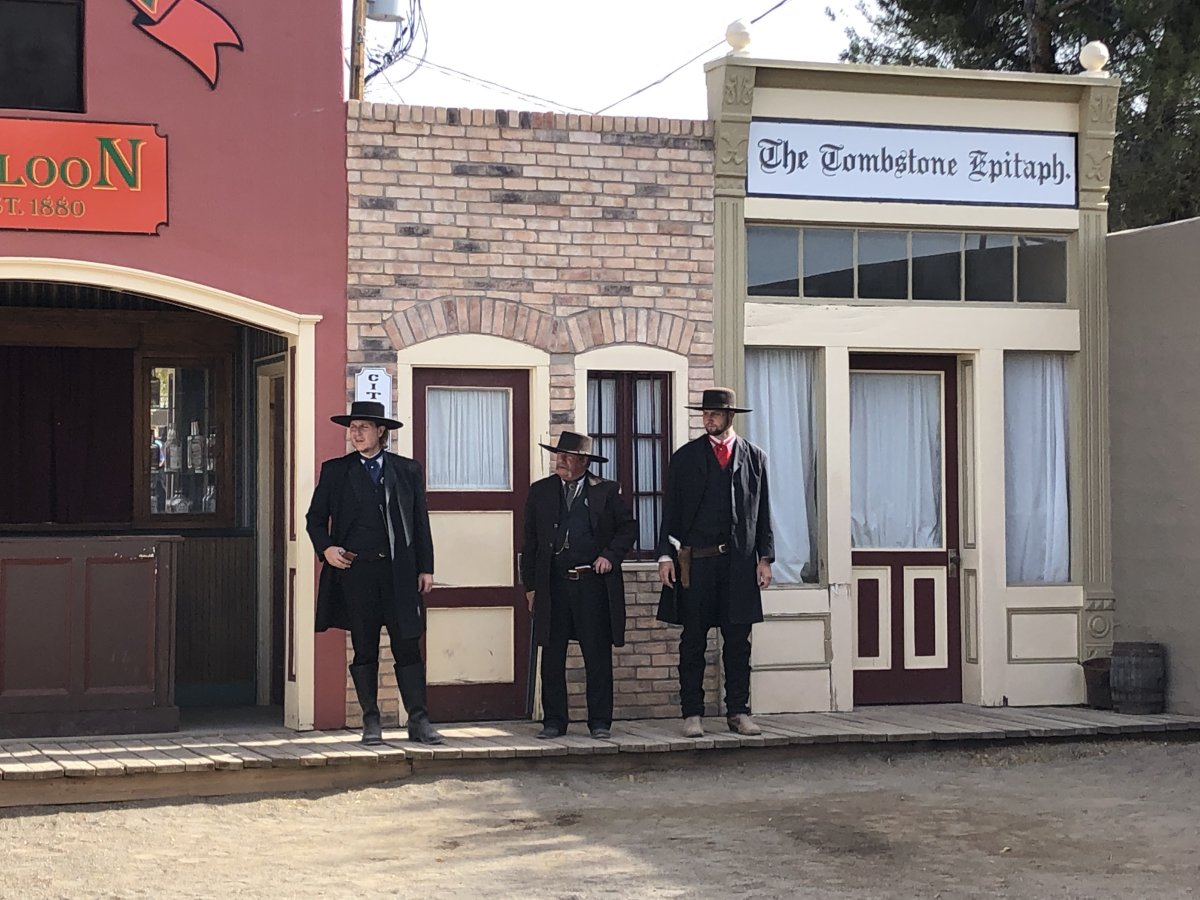


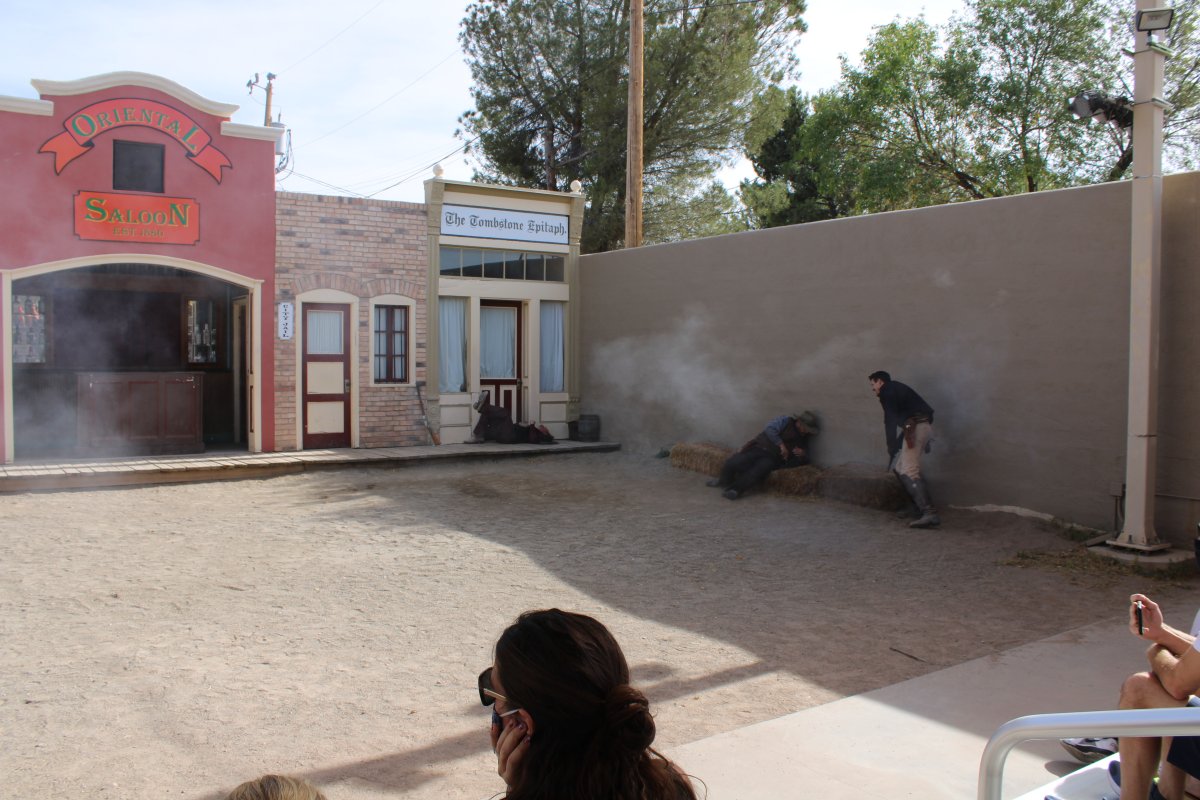


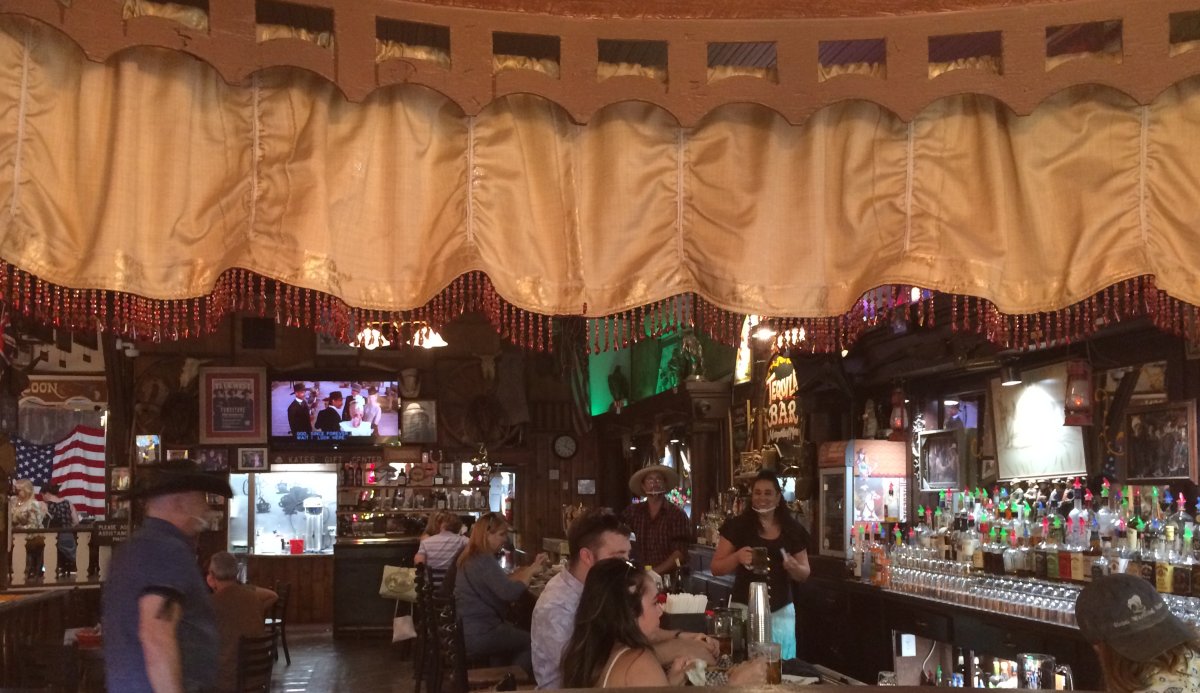

I remembered checking out Boot Hill Cemetery with Johnny but couldn't remember where it was. We had to ask someone. It was on the outskirts of town, back in the direction of Tucson. We had passed it on the way in but did not notice it.
We stopped on the way out but arrived right at closing time so we missed it. This is a shot looking over the fence.




